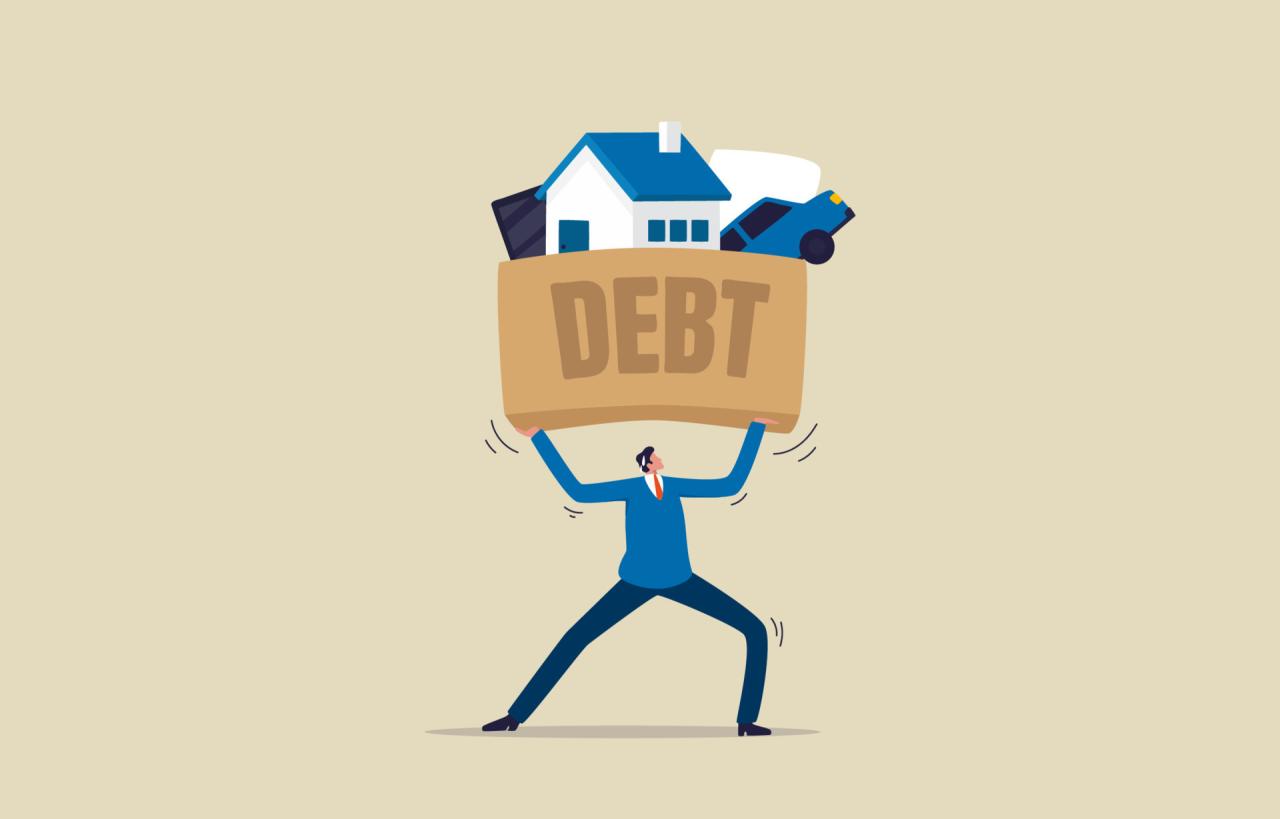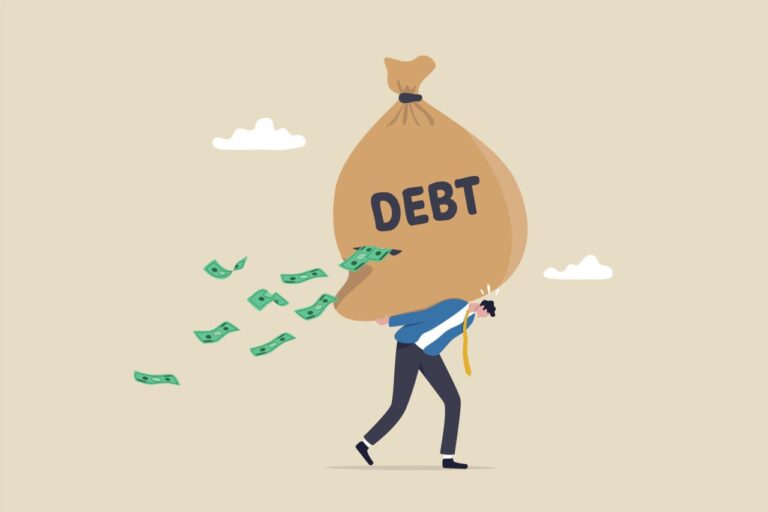In a world often defined by consumerism and readily available credit, escaping the burden of debt has become a paramount financial goal for millions. Debt, particularly high-interest debt, can be a relentless drain on your income, preventing you from saving, investing, and ultimately achieving true financial freedom. While the path to a debt-free life might seem challenging, it is entirely achievable with a clear strategy, unwavering discipline, and the right tools. This comprehensive guide will serve as your ultimate debt elimination roadmap, providing actionable steps, proven methodologies, and crucial insights to help you systematically tackle and eradicate your outstanding balances. From understanding your debt landscape to advanced repayment strategies and maintaining a debt-free lifestyle, prepare to reclaim your financial future and build a solid foundation for lasting prosperity.
What Debt Is and Why It Matters

Before embarking on your journey to debt freedom, it’s essential to understand the different types of debt and their impact on your financial well-being. Not all debt is created equal, but all debt has implications.
A. Differentiating Good Debt from Bad Debt
While the ultimate goal is often to minimize all debt, it’s helpful to categorize it.
- A. Good Debt: Typically involves borrowing for assets that appreciate in value or increase your net worth and income. It often comes with lower interest rates and potential tax benefits.
- Mortgage: A loan to purchase real estate, which can appreciate over time and often builds equity.
- Student Loans: Investment in education, which can increase earning potential.
- Business Loans: Capital used to grow a business that generates profit.
- B. Bad Debt: High-interest debt, often for depreciating assets or consumption, that offers no financial return. This is the primary target for elimination.
- Credit Card Debt: Revolving, high-interest debt that quickly spirals out of control.
- Personal Loans: Often have higher interest rates than secured loans.
- Payday Loans/Title Loans: Extremely high-interest, short-term loans that trap borrowers in a cycle of debt.
- Auto Loans (especially for depreciating cars): While sometimes necessary, these are for a rapidly depreciating asset. Aim for reasonable terms.
B. The Cost of Debt
Debt carries a significant hidden cost: the interest payments that divert your hard-earned money away from savings and investments.
- Interest Payments: The money you pay to borrow. On high-interest debt, this can amount to thousands or even tens of thousands of dollars over time, effectively reducing your real income.
- Opportunity Cost: Every dollar spent on interest is a dollar that cannot be invested. Over decades, this missed investment growth (compounding) represents a substantial loss in potential wealth.
- Credit Score Impact: High debt levels, particularly high credit utilization, negatively impact your credit score, making future borrowing more expensive or difficult.
- Stress and Health: Financial debt is a leading cause of stress, anxiety, and can even impact physical health.
Assess Your Debt Landscape
You can’t conquer what you don’t fully understand. The first critical step is to gather all the facts about your current debt.
A. Create a Comprehensive Debt Inventory
List every single debt you owe. Be meticulous and include all relevant details.
- A. Creditor Name: Who do you owe? (e.g., Bank ABC, Credit Card Company XYZ, Student Loan Servicer).
- B. Account Balance: The exact amount you currently owe.
- C. Interest Rate (APR): The annual percentage rate. This is crucial for prioritizing.
- D. Minimum Monthly Payment: What you are obligated to pay each month.
- E. Due Date: When is each payment due?
- F. Account Type: (e.g., credit card, auto loan, student loan, mortgage, personal loan).
B. Calculate Your Total Debt Burden
Sum up all your debt balances to get a clear picture of your total indebtedness. This number can be daunting, but it’s essential for facing the reality of your situation.
C. Understand Your Cash Flow
Before you can free up money for debt repayment, you need to know exactly how much income you have and where it’s currently going.
- A. Determine Your Net Income: Your take-home pay after taxes and deductions. Include all regular income sources.
- B. Track Every Expense: For at least one month (ideally two), meticulously record every single dollar you spend. Use a budgeting app, spreadsheet, or a simple notebook.
- C. Create a Budget: Develop a clear budget that outlines your income and all your expenses. Identify “needs” (housing, food, utilities, minimum debt payments) versus “wants” (dining out, entertainment, subscriptions).
Strategize Your Attack
With a clear picture of your debt and cash flow, you can choose the most effective strategy to pay it down. The key is consistency.
A. The Debt Avalanche Method
This method prioritizes saving the most money on interest.
- A. How it Works:
- List all your debts from highest interest rate to lowest interest rate.
- Make only the minimum payment on all debts except the one with the highest interest rate.
- Throw every extra rupiah you can find (from budgeting cuts, side hustles, windfalls) at the highest-interest debt.
- Once the highest-interest debt is paid off, take the money you were paying on it (minimum payment + extra payment) and roll it into the next highest-interest debt.
- Repeat until all debts are paid.
- B. Pros: Saves you the most money in interest over the long run.
- C. Cons: Can take longer to see individual debts disappear, which might be demotivating for some.
B. The Debt Snowball Method
This method prioritizes quick wins and building momentum.
- A. How it Works:
- List all your debts from smallest balance to largest balance, regardless of interest rate.
- Make only the minimum payment on all debts except the one with the smallest balance.
- Throw every extra rupiah you can find at the smallest debt.
- Once the smallest debt is paid off, take the money you were paying on it (minimum payment + extra payment) and roll it into the next smallest debt.
- Repeat until all debts are paid.
- B. Pros: Provides rapid psychological wins as smaller debts are eliminated quickly, building motivation.
- C. Cons: You might pay more in total interest compared to the debt avalanche, especially if your smallest debt has a very low interest rate.
C. Balance Transfer Credit Cards
If you have high-interest credit card debt, a balance transfer card can offer a 0% introductory APR period.
- A. How it Works: Transfer your existing high-interest credit card balance to a new card with a promotional 0% APR for a set period (e.g., 12-24 months).
- B. Pros: All your payments go directly to the principal during the promotional period, saving you significant interest.
- C. Cons:
- Balance Transfer Fees: Typically 3-5% of the transferred amount. Factor this into your savings.
- Expiration of 0% APR: If you don’t pay off the balance before the promotional period ends, the remaining balance will accrue interest at a much higher standard rate.
- New Debt Risk: The biggest danger is incurring new debt on the old card, leaving you with even more debt.
- Credit Impact: A new credit application involves a hard inquiry, and closing the old card can affect credit age.
- D. Best Use: Only use if you have a clear plan to pay off the entire transferred balance before the 0% APR expires and have strong discipline to avoid new debt.
D. Debt Consolidation Loans
A debt consolidation loan combines multiple debts into a single new loan, often with a lower interest rate and a fixed monthly payment.
- A. How it Works: You take out a new loan to pay off several existing debts (e.g., credit cards, personal loans).
- B. Pros: Simplifies payments into one monthly bill, potentially lowers your overall interest rate, and provides a clear end date for repayment.
- C. Cons:
- Not a Magic Bullet: It doesn’t reduce the total amount of debt you owe.
- High Rates for Poor Credit: If your credit is poor, the interest rate on a consolidation loan might still be high.
- New Debt Risk: Like balance transfers, if you don’t address the underlying spending habits, you might rack up new debt on your old accounts.
- Fees: Watch out for origination fees.
- D. Best Use: Only consider if you can secure a significantly lower interest rate and are committed to changing your spending habits.
Fueling Your Debt Elimination

Aggressively paying down debt means finding extra money. This involves both cutting expenses and increasing income.
A. Ruthless Budgeting and Spending Cuts
This is where your detailed expense tracking becomes invaluable.
- A. Identify Non-Essential Spending (Wants): Go through your budget category by category and look for areas to cut or reduce.
- Dining Out/Coffee: A major “money leak” for many. Reduce frequency, cook more at home, pack lunches.
- Subscriptions: Audit all monthly subscriptions (streaming, apps, gym memberships). Cancel unused ones. Consider rotating services.
- Entertainment: Find free or low-cost activities (parks, libraries, free events).
- Shopping: Implement a “waiting period” for non-essential purchases. Shop secondhand.
- Transportation: Carpool, use public transport, walk, cycle.
- B. Negotiate Bills: Call your service providers (internet, cable, mobile phone, insurance) and ask for lower rates or better deals.
- C. Reduce Utility Consumption: Be mindful of electricity, water, and gas usage at home.
B. Boosting Your Income
More income means more money for debt repayment.
- A. Side Hustles: Take on a part-time job, freelance work (writing, design, consulting), drive for ride-sharing, or deliver food. Even a few hundred extra dollars a month can make a huge difference.
- B. Sell Unused Items: Declutter your home and sell clothes, electronics, furniture, or collectibles you no longer need on online marketplaces (e.g., Facebook Marketplace, Tokopedia/Shopee in Indonesia, OLX).
- C. Ask for a Raise/Promotion: If applicable, make a strong case for increased compensation at your primary job.
- D. Leverage Windfalls: Direct any bonuses, tax refunds, inheritances, or unexpected gifts directly to your highest-interest debt.
C. The “Snowball” Effect of Savings
As you eliminate smaller debts, the money freed up should immediately be redirected to the next debt. This creates a powerful snowball of momentum.
Maintaining Momentum and Staying Debt-Free
Paying off debt is a huge accomplishment, but the journey doesn’t end there. Maintaining a debt-free lifestyle requires new habits and vigilance.
A. Build a Robust Emergency Fund
Once high-interest consumer debt is gone, your next priority should be building or bolstering your emergency fund.
- A. Why: To prevent falling back into debt for unforeseen expenses. It acts as your buffer, so you don’t need to use credit cards.
- B. Goal: Aim for 3-6 months of essential living expenses (or more for variable income).
- C. Location: Keep in a separate, easily accessible, high-yield savings account.
B. Live Below Your Means
This is the cornerstone of long-term financial health. Spend less than you earn consistently.
- A. Continuous Budgeting: Keep budgeting a regular practice, even after debt is gone. It helps you allocate funds for savings, investments, and future goals.
- B. Prioritize Needs Over Wants: Continue to distinguish between essential spending and discretionary spending.
- C. Avoid Lifestyle Creep: As your income grows, resist the urge to immediately increase your spending. Instead, direct extra income towards savings and investments.
C. Build Wealth Through Investing
Once debt-free and with an emergency fund, shift your focus to wealth accumulation.
- A. Maximize Retirement Accounts: Contribute generously to 401(k)s, IRAs, and HSAs to leverage tax advantages and compounding.
- B. Open a Brokerage Account: Invest in diversified index funds or ETFs for long-term growth.
- C. Consider Passive Income Streams: Explore generating passive income from investments (dividends, rental income) or digital assets.
D. Use Credit Cards Responsibly
Credit cards can be useful tools for convenience, rewards, and building a good credit score if used responsibly.
- A. Pay the Statement Balance in Full Every Month: This is the golden rule. Avoid paying any interest.
- B. Keep Utilization Low: Aim for under 30% utilization, ideally under 10%, to maintain a good credit score.
- C. Avoid Carrying a Balance: Never carry a balance from month to month, as interest charges negate any rewards.
- D. Consider Not Using Them: If you struggle with credit card debt, consider cutting up your cards and operating on a cash-only basis.
E. Set New Financial Goals
Having clear, exciting financial goals keeps you motivated and ensures your freed-up income has a purpose.
- A. Down Payment for a Home: A concrete goal can drive savings.
- B. Children’s Education Fund: Plan for future expenses.
- C. Early Retirement: A powerful motivator for consistent savings and investment.
- D. Philanthropy: Giving back can be a deeply rewarding financial goal.
Overcoming Roadblocks on Your Debt Elimination Journey
The path to debt freedom isn’t always smooth. Here are strategies for common challenges.
A. Low Income
If your income feels too low to make a dent in debt, focus on strategies to increase it in parallel with cutting expenses.
- A. Skill Development: Invest in courses or training to gain high-demand skills.
- B. Side Hustles: Even a small, consistent side income can significantly impact debt repayment.
- C. Negotiate Salary/Seek Promotion: Proactively look for opportunities to increase your primary income.
B. Unexpected Expenses
Life happens, and emergencies can threaten to derail your plan.
- A. Emergency Fund First: This is why establishing an emergency fund (even a small starter one) is crucial before aggressively attacking debt. It protects your progress.
- B. Use Sinking Funds: For anticipated but irregular expenses (car repairs, medical deductibles), save small amounts monthly into a “sinking fund” to avoid using credit.
- C. Re-Evaluate and Adjust: If an emergency does force you to use debt, don’t give up. Re-evaluate your budget, pay off the new debt as quickly as possible, and get back on track.
C. Losing Motivation
Debt elimination can be a long, tough journey. Keep your spirits up.
- A. Celebrate Small Wins: Acknowledge every debt paid off, no matter how small.
- B. Track Progress Visually: Use charts or apps to see your debt balance decreasing.
- C. Share Your Journey (Optional): Find an accountability partner or join an online community for support and encouragement.
- D. Focus on the “Why”: Continuously remind yourself of the freedom and peace of mind waiting for you.
D. Pressure from Others
Friends, family, or societal norms can sometimes pressure you into spending beyond your means.
- A. Learn to Say No Gracefully: “That’s not in my budget right now,” or “I’m focusing on my financial goals.”
- B. Suggest Free/Low-Cost Activities: Propose alternatives that align with your budget.
- C. Surround Yourself with Supporters: Seek out those who understand and support your financial goals.
Conclusion
Embarking on a debt elimination roadmap is one of the most empowering financial journeys you can undertake. It demands introspection, discipline, and a willingness to make smart choices. By meticulously assessing your current debt, strategically choosing a repayment method, aggressively freeing up cash through spending cuts and income boosts, and committing to long-term debt-free habits, you are not just eliminating balances; you are building a foundation of financial strength and resilience. The freedom, peace of mind, and ability to pursue your true passions await you on the other side of debt. Start today, stay focused, and carve out your path to an empowered, prosperous, and truly debt-free future.



